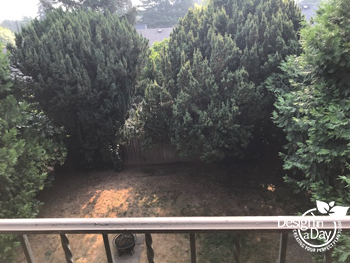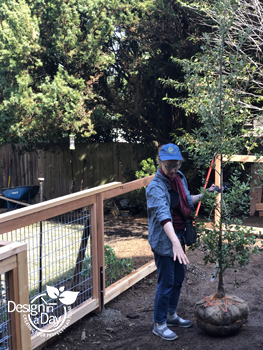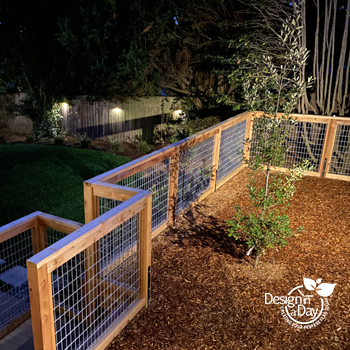Evergreen Ground Cover Plantings for Portland Front Yards
This blog could be called many things…..Drought tolerant Plants for Front Yard Curb appeal in Portland or Evergreen Groundcovers for Front Yard Curb Appeal but actually it should simply say these plants together are my favorite all season interest groundcover.
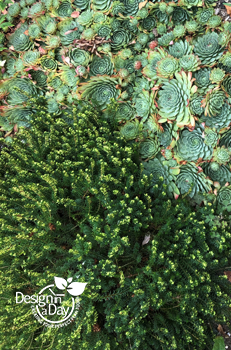
Evergreen texture and contrast party in my client Lisa’s garden in late winter. Heather and Hen and Chick together.
Low Water Ground Cover Plants – Heathers with Succulents
I want to introduce a drought tolerant heather that looks fantastic with hens and chicks and talk about how to use these plants for year round good looks in your Portland landscape.
Reasons to use Heather with Succulents or Hens and Chicks
We garden designers want attractive planting combinations to be year round colorful attractive plants that look great together, suppress weeds, feed bees and are simple to care for. This is my 2nd blog of three showcasing the use of low water and drought tolerant plants.
What is Great About Planting Heathers and Hens and Chicks together?
Contrast! The fine soft needles of the heather, the large blunt shape of the Sempervivum leaf and the rosette that it forms creates a strong contrast. Using these combinations really tickles my designer’s fancy. Using contrast is an important tool for design.
Drought Tolerance: They both need well drained soil and must be irrigated the first summer to establish mature drought tolerant roots. So yes plant them together – they are a perfect fit.
Heathers and hens and chicks are evergreen, provide multiple foliage and flower colors to create interest. It’s fun to see a gold leafed heather with the dark red rosettes of a hen and chick by the front door in winter. No wonder I love to use them for a colorful year round landscape planting plan.
The Shortie Heathers are My Favorites
The shorties – Besides being so attractive these very low (4” tall or less) heather (Calluna vulgaris) are well worth it because they need very little to no pruning at all. Some clients don’t remember to prune anything so these shorties are just right for them. All the other types of heather have to be pruned. I’ve nicknamed these heather ‘shorties’ to set them apart from the many many other kinds of heathers. If you call them a “shortie heather” at a plant nursery they will not know what you are talking about. Stick with the latin and look for these at specialty growers and nurseries. See end of blog for where to buy these special heathers.
I like to use a very short heather with my hens and chicks like this three inch high heather called Calluna vulgaris ‘Mrs. Ronald Gray’. This heather has needles that grow in a configuration that look like tiny ferns fronds and is my favorite of them all. Other very short 2 inch to four-inch-tall heathers include Calluna vulgaris ‘Caleb Threkheld’, and ‘White Lawn’. I use these shortie heathers in a variety of situations with many different kinds of plants but they look especially good with the succulents. They will also drape over a wall nicely.
The Difference Between Drought Tolerant Heather and Other Heathers
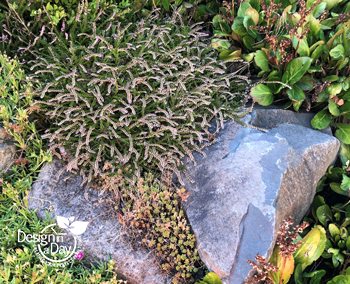
The stems look like feathery tiny ferns on this unique Calluna vulgaris, Mrs Ron Green (shortie heather)
I want to be sure my readers will understand that not all heathers are drought tolerant (and most of them are not shorties either). Heathers named Calluna vulgaris – Scotch Heather (summer and fall flowering heathers) are very different from the spring flowering heathers (Erica carnea and Erica darleyensis) in terms of their soil conditions and water needs. The Calluna must have well drained soil. They must be watered regularly and carefully their first summer, after that, they prefer less water and can become drought tolerant after just a few years of maturity. They need full sun or at least 8 hours where Erica carnea can make do with less. Erica darleyensis can take light shade although I like to grow them in full morning sun.
I Water My ‘White Lawn’ Heather Once a Month in Summer
My Calluna vulgaris ‘White Lawn’ at my vacation house gets watered once a month if its been hotter than usual in the summer. I’m only there once a month and they even made it through the heat dome of 2021.
Plant Heathers in fall
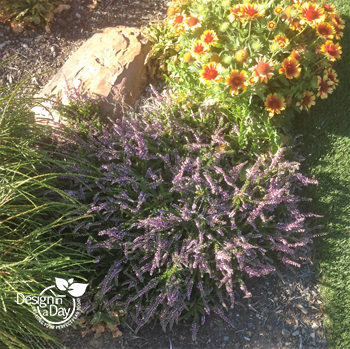
Calluna vulgaris ‘Mrs. Ron Green’ borders synthetic lawn flowering in mid summer at my clients home.
Life will be easier, and kinder if you plant your heathers in the fall-best practice. Planting in early spring would be next best. Planting in late spring or early summer will mean complete devotion to watering these plants. It’s easy to kill heather their first summer and here is why – most plants leaves will droop a little and let you know they are dry. You water them and all is forgiven.
Heathers Cannot Dry Out The First Summer
Not so with heathers – Heather cannot dry out the first summer, not even once or it’s all over. This is why planting in the fall is easier on you. If the chance they will have to be replaced come fall is not a problem for you, you have nothing to lose except the plants. Most of us won’t be planting 50 of these so our loss is minimal except for the shorties which are harder to get in the first place…..still calculate your potential loss and decide if you want to gamble now that you have the facts.
No Pruning for the Shortie Varieties of Calluna Vulgaris – Scotch Heather
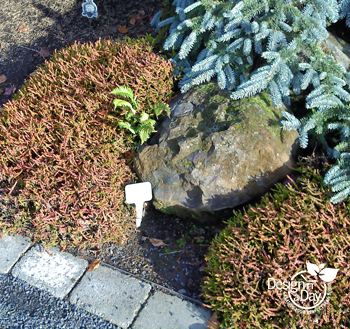
Calluna vulgaris – heather freshly pruned at the Oregon Garden. These heathers get about 12″ tall and must be pruned each year.
Taller type heather must be pruned thoughtfully every year but mostly one never needs to prune these shortie Calluna vulgaris – Scotch Heather. I have plants Calluna vulgaris ‘White Lawn’ that are over 10 years old. I’ve let one heather spread out and moved any hens and chicks that got in the way. I have a patch that is over 15 years old and it’s about 24″ wide now. I like it that wide and I still have room for plenty of hens and chicks.
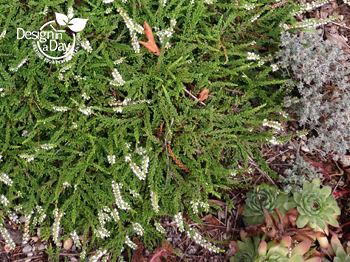
My large two foot swath of Calluna vulgaris ‘White Lawn’ gets little to no water at my vacation home. This is what I call a “shortie” heather.
If you are still with your heathers in ten years, you can choose to either referee so the heather doesn’t totally bury the hens and chicks as it matures by carefully pruning out a section of the heather or….You could be a lazy gardener and just let the heathers grow over the top of the hens and chicks since by then you will have lots and lots of the hens and chicks. I love the combo so I have done a little of both. Just realize that the section you cut out of the heather will not grow back.
Happily hens and chicks are so easy to transplant. Sometimes I pick little chicks off the mother plant and tuck them into a cooler spot in the ground even with no roots on them at all and often they root and thrive – they are that easy to transplant. Learn more about hens and chicks.
Finding the Shortie Heathers to Buy
So perhaps I’ve convinced you that these shorties heathers are just right for adding full season color and interest to your low water landscape. Where to buy them?
Highland Heathers – Janice Linewebber can u.p.s. right to your door. If her web site is not updated just e mail her at hheathers@canby.com Ask her if she has any Calluna vulgaris that grows only 3 or 4 inches tall. She will probably ask if you are my client…I love these little shortie Calluna vulgaris heathers so much in my designs.
Heaths and Heathers is mail order and while there are threats of retirement….so far we can still order from her. She is also on Facebook as Heaths and Heathers Nursery and is in Washington. Ask her for substitutions as she has some shortie heathers I’ve never grown or used. A shortie is 4″ or under when mature.
There is a large wholesale grower in the area called Little Prince that sometimes grows these heathers. Therefore, I have found them at Cornell Farms and Portland Nursery at times.
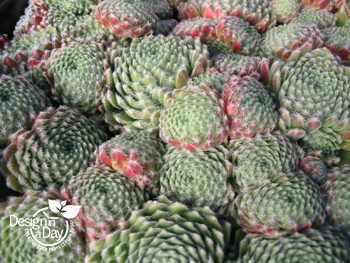
Top marks for this Sempervivum arachinoides called ‘Pekinense’ grown by Little Prince and photo by Little Prince as well.
Contact Us for a Thoughtful Drought Tolerant Landscape Design
We love to create landscape plans that are low maintenance and can support our environment. Plants help cool the soil, absorb carbon and provide food for pollinators and other life. They also make your home welcoming and attractive. Contact us if you want a low maintenance landscape design that is interesting, colorful and can be an asset to your home and community.

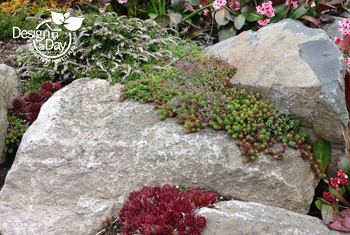
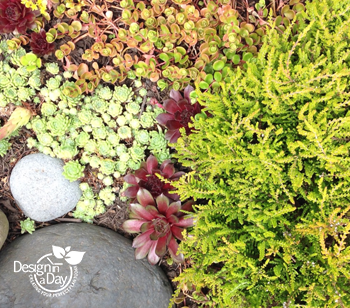
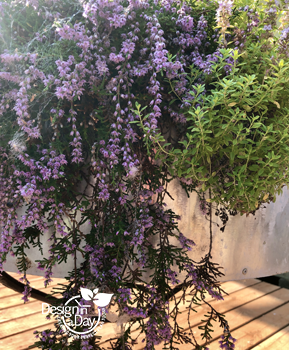
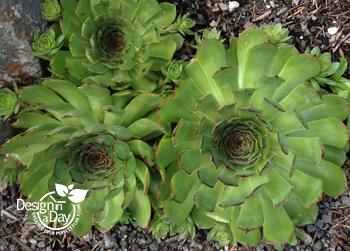
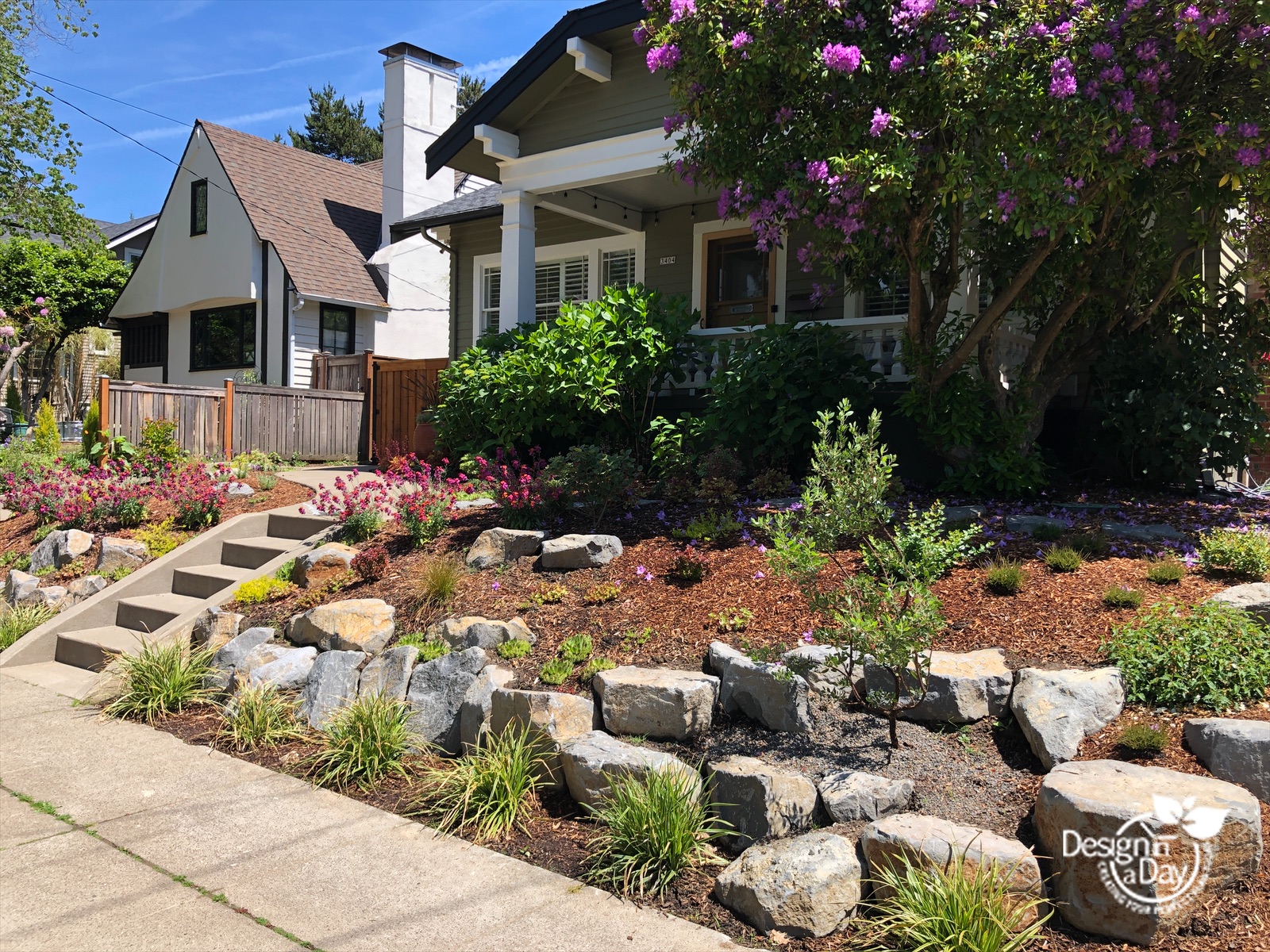
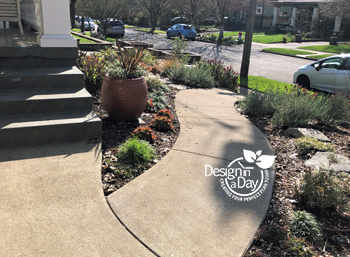
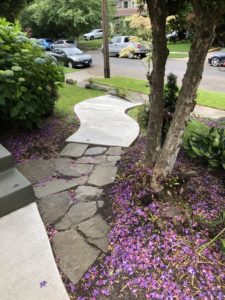
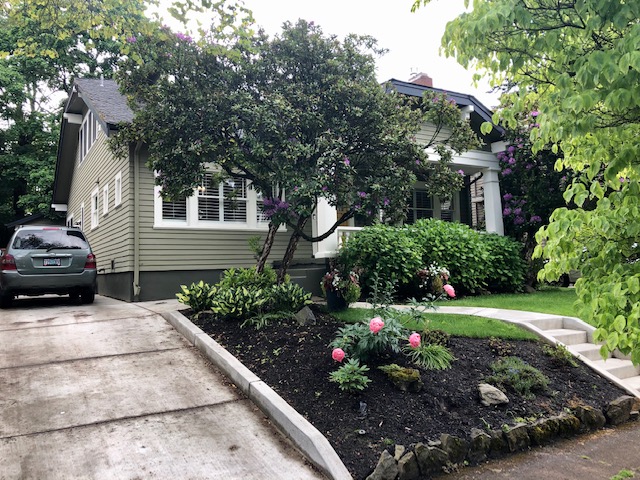
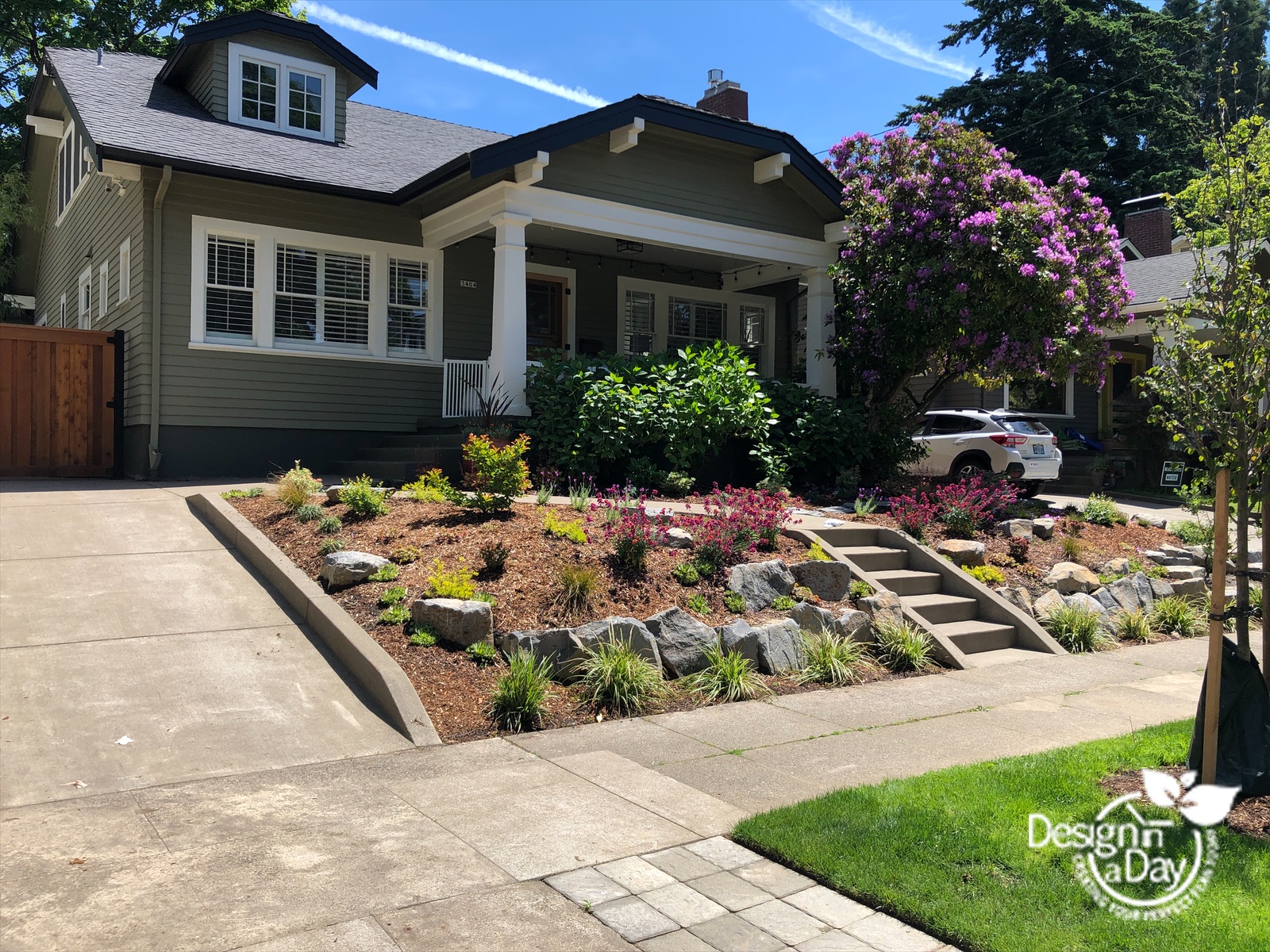
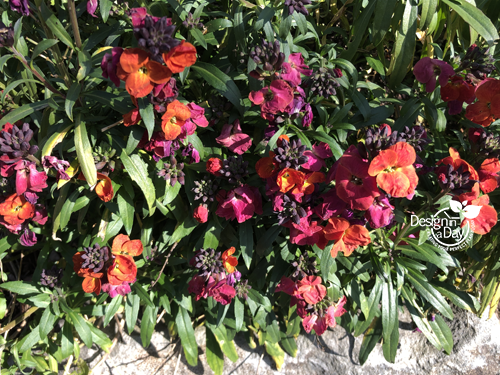
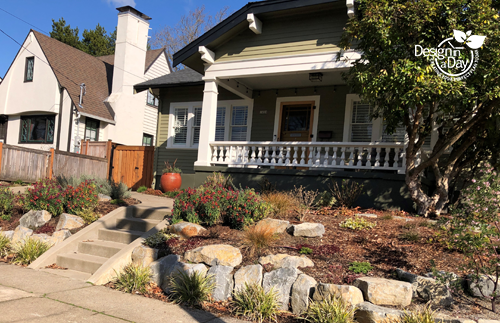
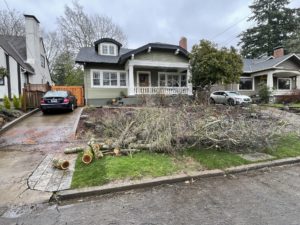
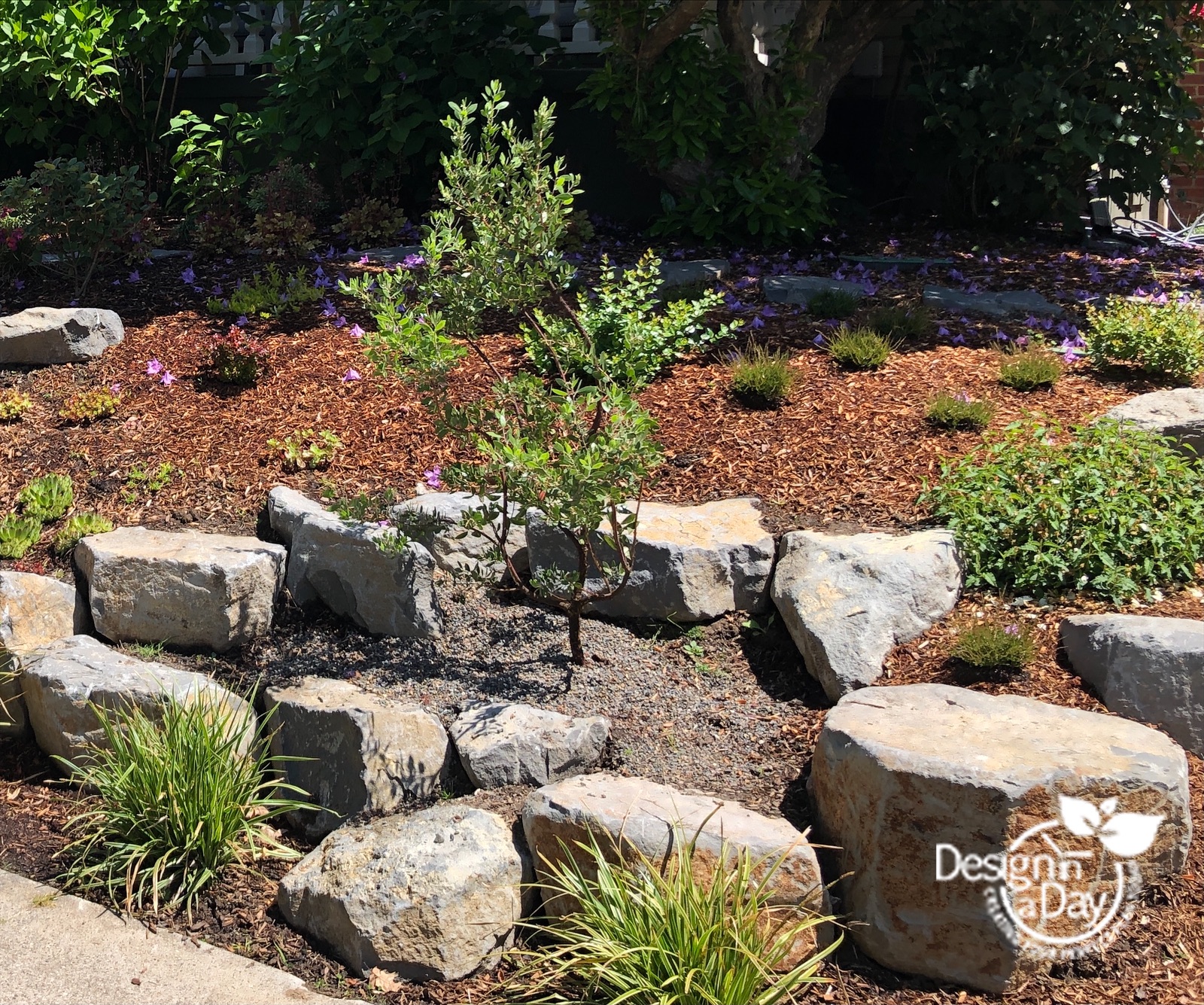
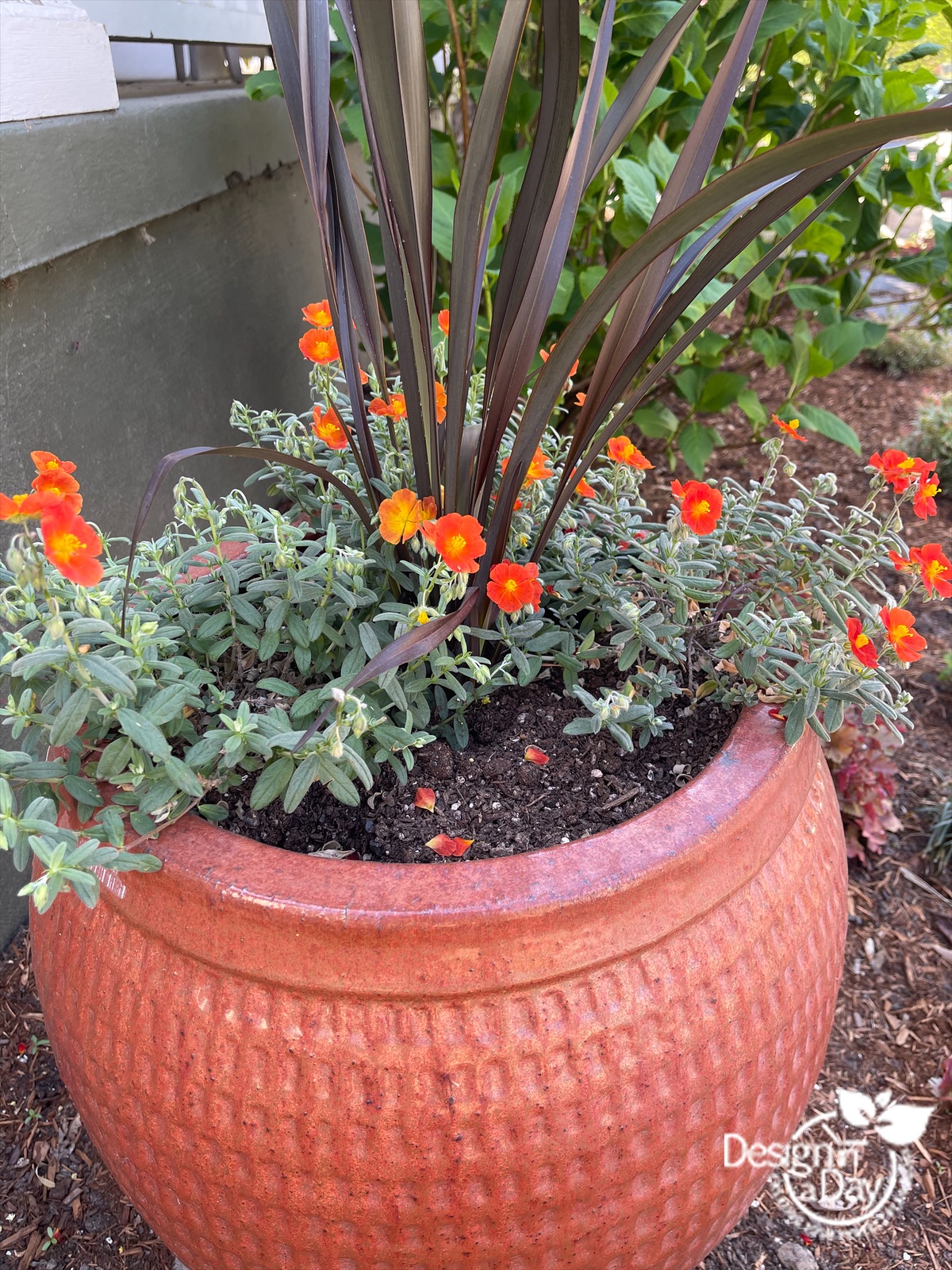
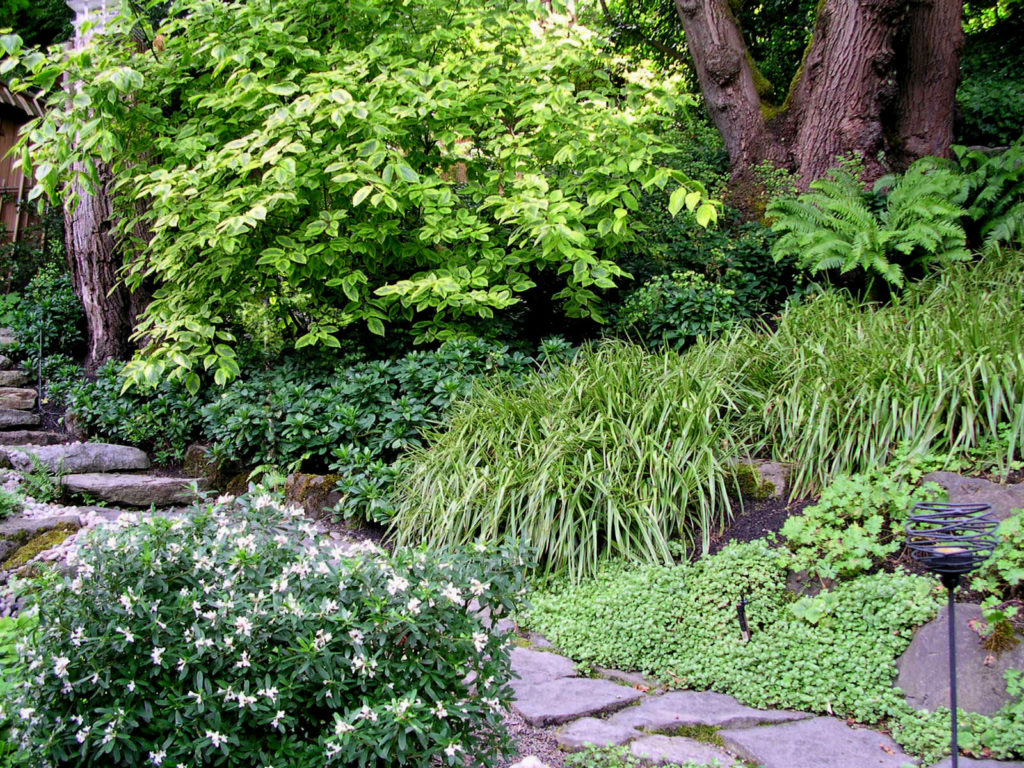
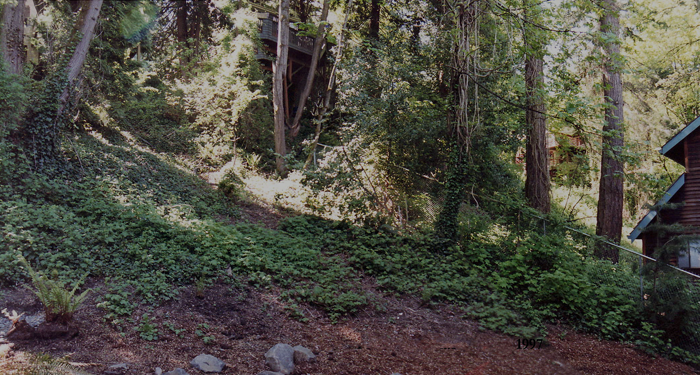
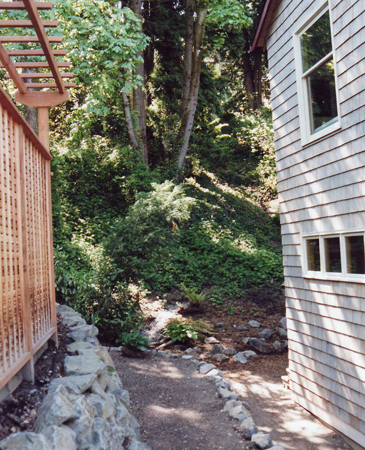
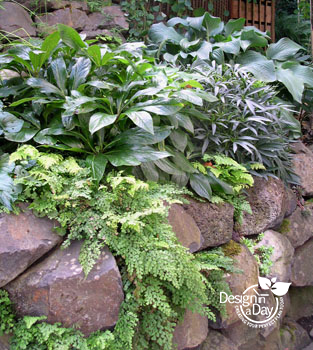
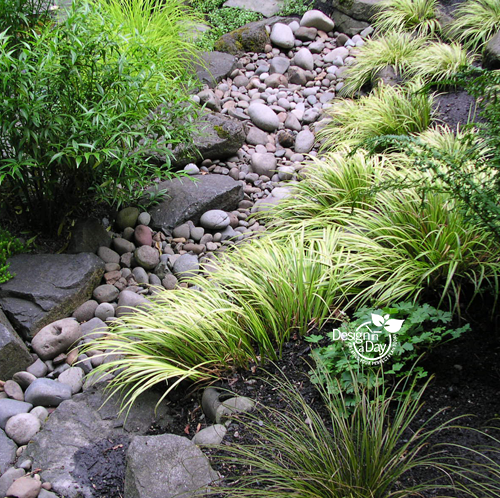
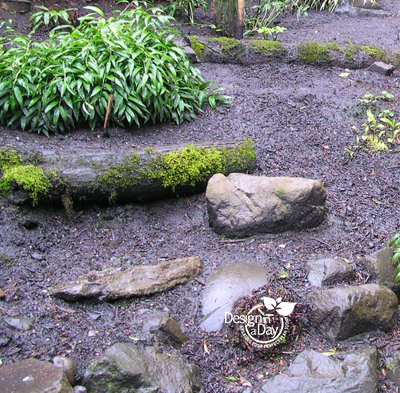 There was a mysterious wet area part way up the slope. We could not see the water in the summer but we could hear it. In the winter it was much louder, a dull roar although oddly we did not see much water. Even in the summer I could always hear the sound of water trickling somewhere underground. A professional solution was needed and I wanted that solution to be part of the beauty.
There was a mysterious wet area part way up the slope. We could not see the water in the summer but we could hear it. In the winter it was much louder, a dull roar although oddly we did not see much water. Even in the summer I could always hear the sound of water trickling somewhere underground. A professional solution was needed and I wanted that solution to be part of the beauty.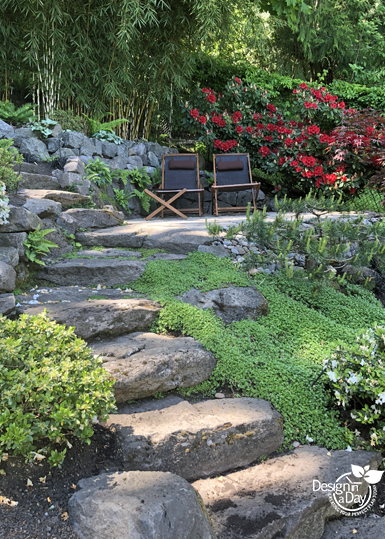
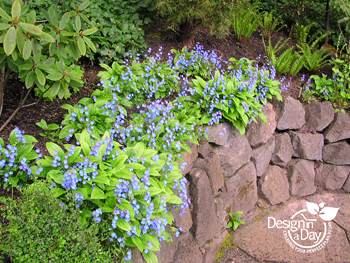
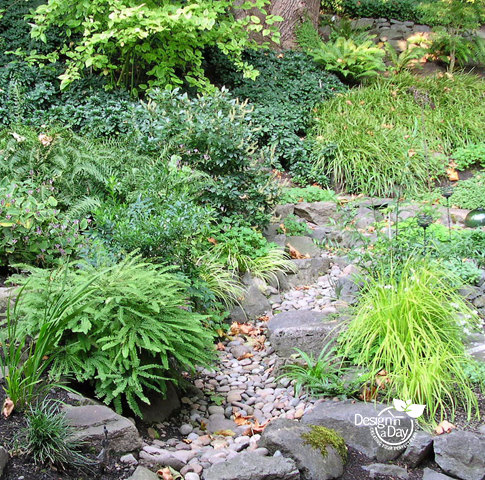
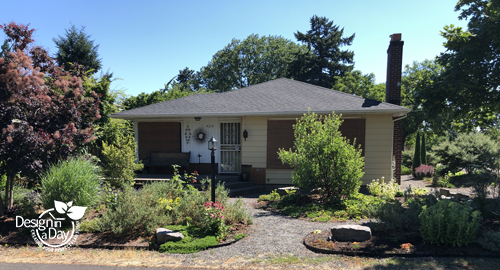
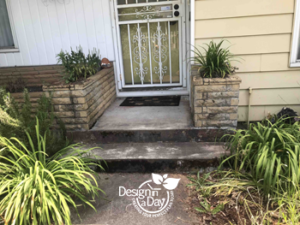 The Front Door Entry Was Disappointing
The Front Door Entry Was Disappointing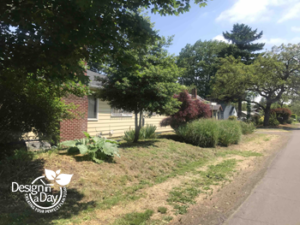
 Laurie wanted a fully drought tolerant garden on the south side that could defend itself against neighborhood foot traffic and dogs. Since this was the south side it was a perfect place to explore the more Arid and New Mexico style plantings. It was well over 100’ long and narrow.
Laurie wanted a fully drought tolerant garden on the south side that could defend itself against neighborhood foot traffic and dogs. Since this was the south side it was a perfect place to explore the more Arid and New Mexico style plantings. It was well over 100’ long and narrow.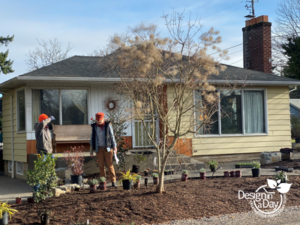 Designer contractor collaboration (
Designer contractor collaboration (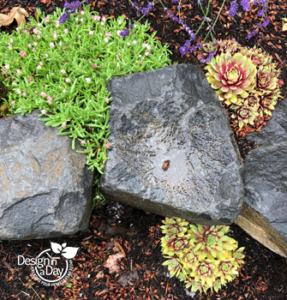 “I want to thank you again for your incredible design sense and plant recommendations. We are so happy with our south and front yard – we walk around it every evening, we sit on the new front porch and find so much solace and peace in it. Our neighbors also love it and frequently comment. The world needs more beauty and joy right now!! And how about my beautiful prickly pear (Nopales). It’s grown exponentially from two pads to many!!!”
“I want to thank you again for your incredible design sense and plant recommendations. We are so happy with our south and front yard – we walk around it every evening, we sit on the new front porch and find so much solace and peace in it. Our neighbors also love it and frequently comment. The world needs more beauty and joy right now!! And how about my beautiful prickly pear (Nopales). It’s grown exponentially from two pads to many!!!”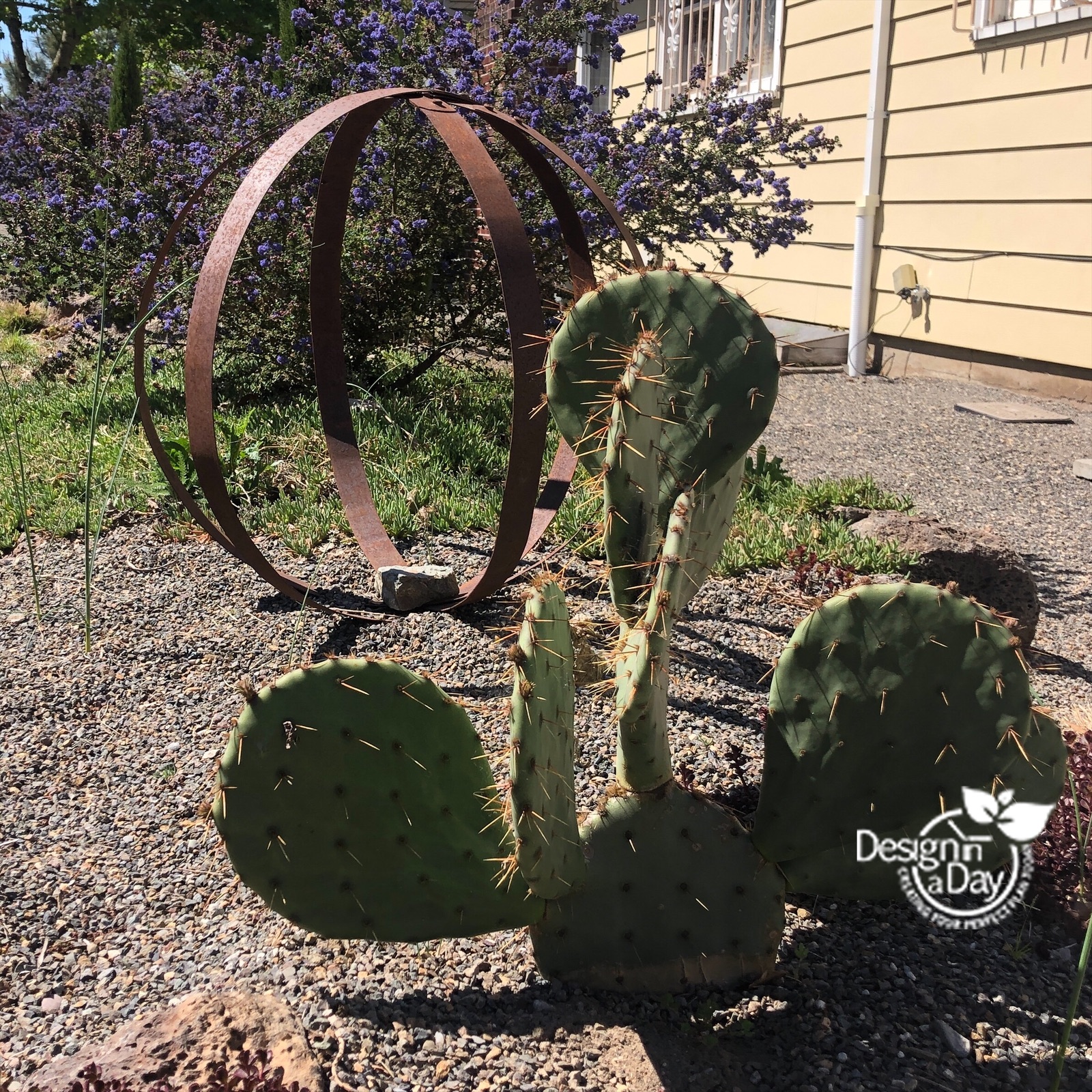
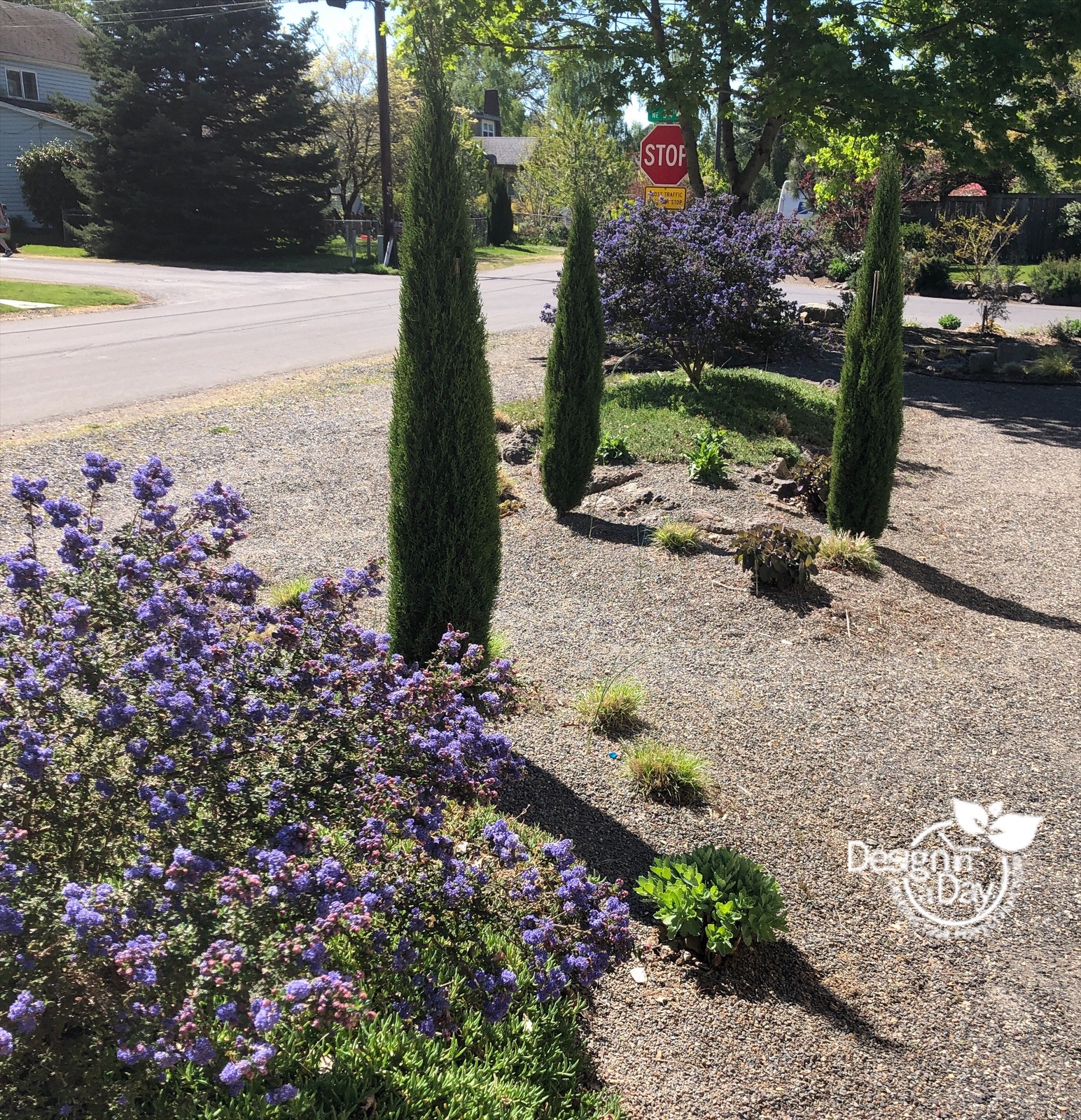
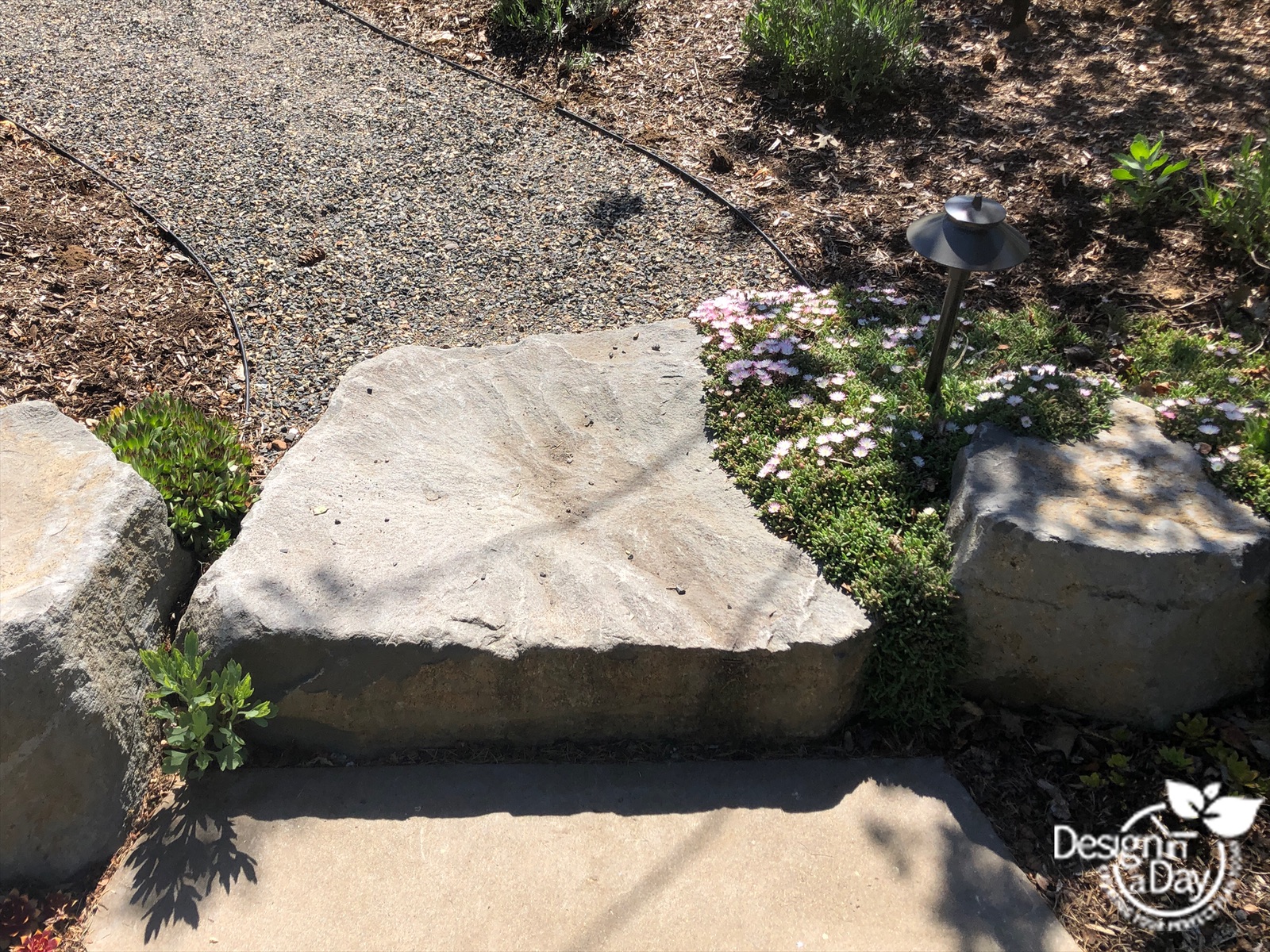
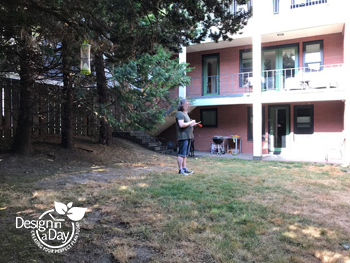
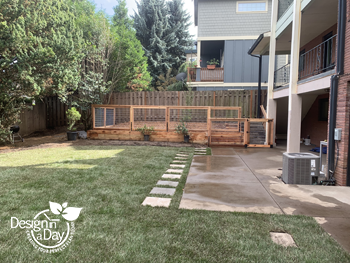
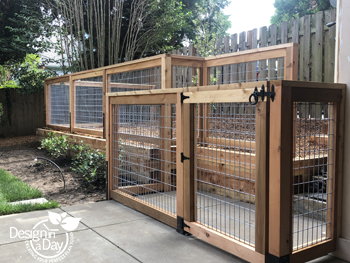 To reach the back yard, we go down more stairs and enter into the outdoor family entertaining area through a gate. Dogs are invited to join their humans through this gate, after all they will get to use the big back yard too, accompanied by their humans. 90% of the poo goes in the dog yard which is covered in 6″ of special cedar chips.
To reach the back yard, we go down more stairs and enter into the outdoor family entertaining area through a gate. Dogs are invited to join their humans through this gate, after all they will get to use the big back yard too, accompanied by their humans. 90% of the poo goes in the dog yard which is covered in 6″ of special cedar chips.